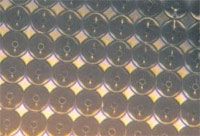Microsoft research has developed a competing technology to LCD, which it claims will provide brighter, cheaper screens.
Microsoft researchers believe that there is still room for improvement and they feel that their telescopic pixel innovation may lead the way to displays with much higher contrast ratios and brighter colors. According to the scientists, liquid crystals in LCDs cannot completely block light in the off state and are in many cases unusable in bright light. “LCDs transmit only 5–10% of the backlight, because of the polarizer, which blocks more than 50% of the light. Also, each color filter transmits only 30% of the remainder of the light, and there are some additional layers that decrease transmission even further,” a paper published in Nature states. Telescopic pixels could solve this problem.
The technology, which it dubs telescopic pixels, employs "a pixel that uses a pair of mirrors to block or transmit light."
According to Microsoft, this allows the pixels to switch completely off and on within 1.5 milliseconds, as opposed to the 25 to 45 milliseconds it takes for an LCD to switch between black and white.
The company claims this would bring an end to the blurring effect that occurs on LCD monitors when displaying fast moving images.
Microsoft also claims the pixels will be significantly brighter than in LCD, meaning monitors wouldn't require as strong a backlight, reducing power consumption and potentially making them usable in direct sunlight.
The company is also touting the simplicity of its competitor, arguing that because telescopic pixels switch so quickly manufacturers could embed "red, green, and blue light-emitting diodes behind each pixel and have them sequentially light up to create a color shade", as opposed to LCDs, in which the red, green and blue subpixels each require their own transistor circuits.
The simplicity of telescopic pixels could significantly reduce manufacturing costs, according to the company.

